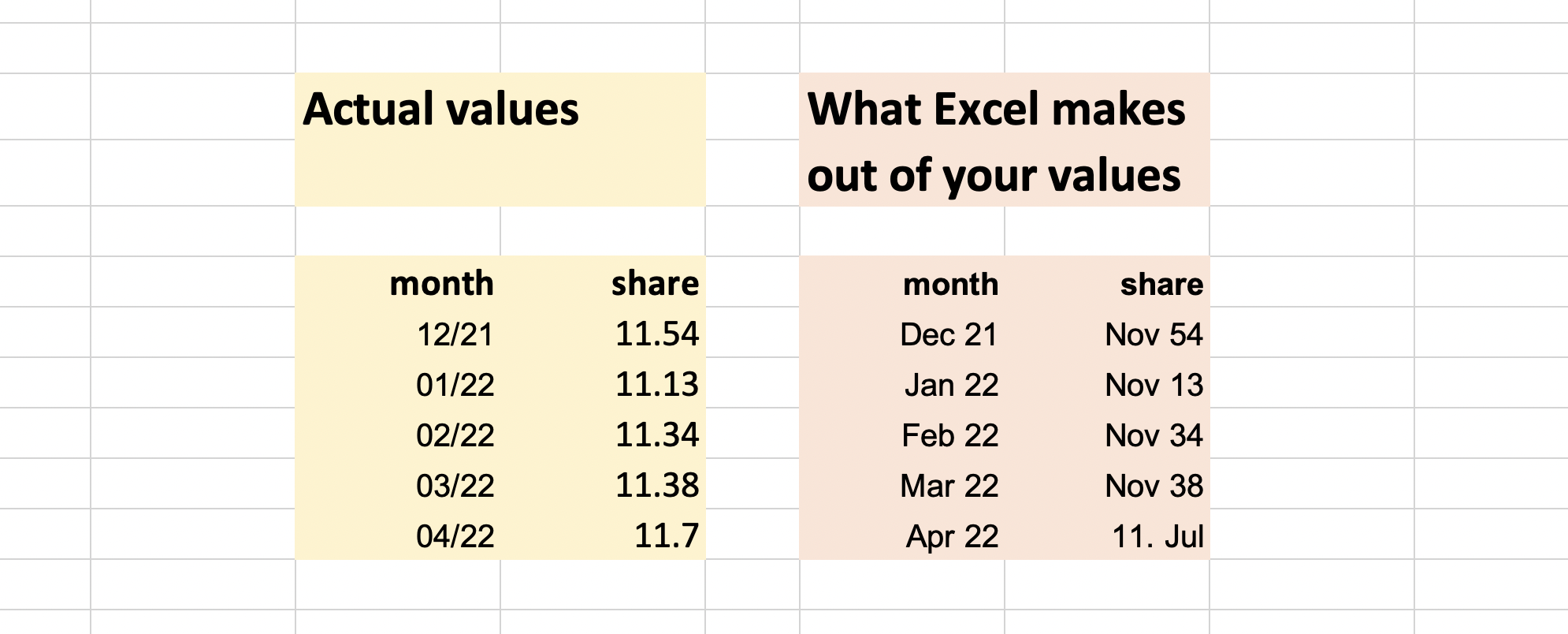How Excel Links Not Working can Save You Time, Stress, and Money.
Wiki Article
Excel Links Not Working Can Be Fun For Everyone
Table of ContentsAn Unbiased View of Excel Links Not Working3 Easy Facts About Excel Links Not Working ExplainedGet This Report about Excel Links Not WorkingThe Of Excel Links Not WorkingExcel Links Not Working Things To Know Before You Get This

Array calculation functions like either can not take care of whole column referrals or calculate all the cells in the column. User-defined features do not instantly identify the last-used row in the column and also, as a result, often compute whole column references inefficiently. However, it is very easy to program user-defined functions so that they acknowledge the last-used row (excel links not working).

The 6-Second Trick For Excel Links Not Working
Making use of the formula for a dynamic array is generally preferable to the formula because has the disadvantage of being an unstable feature that will certainly be determined at every recalculation. Efficiency reduces because the feature inside the vibrant array formula should take a look at several rows. You can reduce this efficiency decrease by saving the part of the formula in a separate cell or defined name, and after that describing the cell or name in the vibrant array: Counts!z1=COUNTA(Sheet1!$A:$A) Offset, Dynamic, Variety=OFFSET(Sheet1!$A$ 1,0,0, Counts!$Z$ 1,1) Index, Dynamic, Array=Sheet1!$A$ 1: INDEX(Sheet1!$A:$A, Counts!$Z$ 1+ROW(Sheet1!$A$ 1) - 1,1) You can likewise use functions such as to create dynamic varieties, but is volatile and always calculates single-threaded.
Using multiple dynamic arrays within a solitary column needs special-purpose checking functions. Making use of many dynamic varieties can reduce efficiency. In Office 365 variation 1809 and also later on, Excel's VLOOKUP, HLOOKUP, and also MATCH for precise match on unsorted information is much faster than in the past when looking up numerous columns (or rows with HLOOKUP) from the very same table array.
If you use the exact suit alternative, the estimation time for the function is proportional to the number of cells scanned prior to a match is found. Lookup time using the approximate match choices of,, and also on sorted data is quick and is not substantially raised by the length of the array you are looking up.
Indicators on Excel Links Not Working You Need To Know
Ensure that you understand the match-type as well as range-lookup options in,, and also. The complying with code example shows the phrase structure for the function. For more details, see the Match technique of the Worksheet, Feature object. MATCH(lookup worth, lookup array, matchtype) returns the largest match less than or equivalent to the lookup value when the lookup variety is arranged rising (approximate suit) (excel recommended you read links not working).The default option is approximate suit sorted rising. The adhering to code example shows the phrase structure for the and features.
VLOOKUP(lookup value, table range, col index num, range-lookup) HLOOKUP(lookup worth, table array, row index num, range-lookup) returns the biggest suit much less than or equal to the lookup worth (approximate match). This is the default alternative. Table variety need to be arranged ascending. requests an exact suit and presumes the information is not sorted.
Little Known Questions About Excel Links Not Working.
If your data is sorted, but you desire read more a specific match, see Use two lookups for arranged data with missing out on worths. Attempt making use of the and works as opposed to. Is a little much faster (about 5 percent faster), simpler, as well as utilizes less memory than a mix of and, or, the added versatility that and also offer commonly allows you to substantially conserve time.
The function is rapid as well as is a non-volatile function, which speeds up recalculation. The function is likewise fast; nevertheless, it is an unpredictable feature, and it in some cases considerably enhances the time taken to refine the estimation chain.$A$ 2:$F$ 1000, MATCH(A1,$A$ 1:$A$ 1000,0),3) Since precise suit lookups can be slow, take into consideration the following choices for enhancing efficiency: Utilize one worksheet.
When you can, the data initially (is fast), as well as use approximate suit. When you need to use a specific suit lookup, restrict the variety of cells to be scanned to a minimum. Usage tables and organized referrals or vibrant range names rather than describing a lot of rows or columns.
Excel Links Not Working Fundamentals Explained
Two approximate matches are dramatically faster than one precise suit for a lookup over greater than a few rows. (The breakeven factor has to do with 10-20 rows.) If you can arrange your data however still can not utilize approximate suit due to the fact that you can not be certain that the worth you are looking up exists click for more in the lookup array, you can use this formula: IF(VLOOKUP(lookup_val, lookup_array,1, Real)=lookup_val, _ VLOOKUP(lookup_val, lookup_array, column, Real), "notexist") The first component of the formula works by doing an approximate lookup on the lookup column itself.VLOOKUP(lookup_val, lookup_array, column, Real) If the answer from the lookup column did not match the lookup value, you have an absent value, and the formula returns "notexist". Understand that if you look up a worth smaller than the tiniest value in the list, you receive a mistake. You can handle this mistake by utilizing, or by including a tiny test worth to the checklist.
Beginning with Excel 2007, you can use the function, which is both basic as well as rapid. IF IFERROR(VLOOKUP(lookupval, table, 2 FALSE),0) In earlier variations, a straightforward but sluggish method is to utilize a feature which contains 2 lookups. IF(ISNA(VLOOKUP(lookupval, table,2, FALSE)),0, _ VLOOKUP(lookupval, table,2, FALSE)) You can stay clear of the double precise lookup if you utilize specific when, keep the cause a cell, and afterwards check the result before doing an.
Report this wiki page